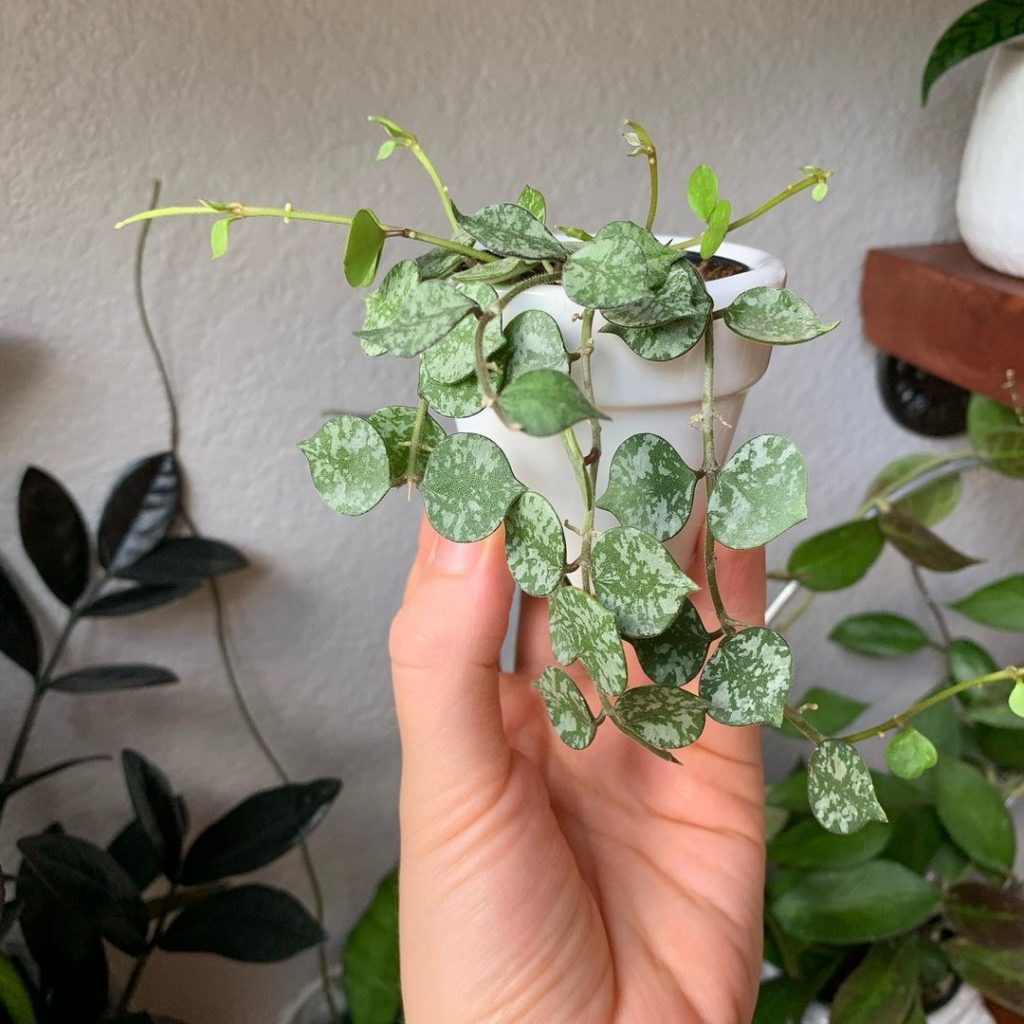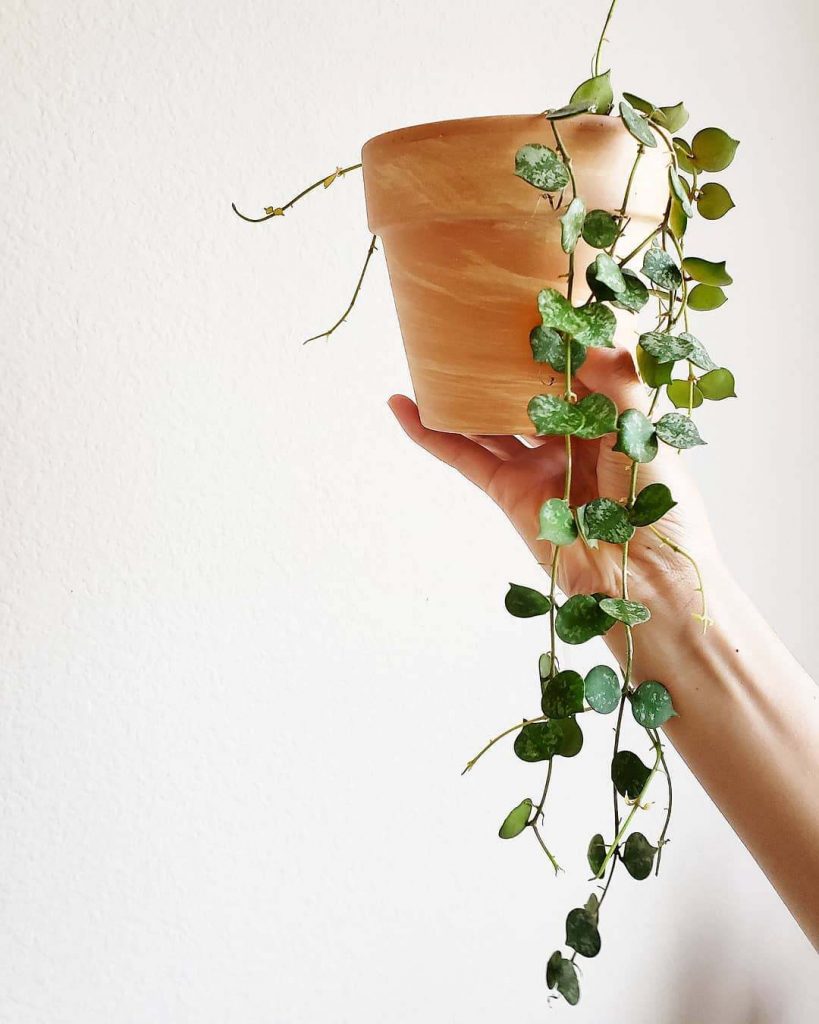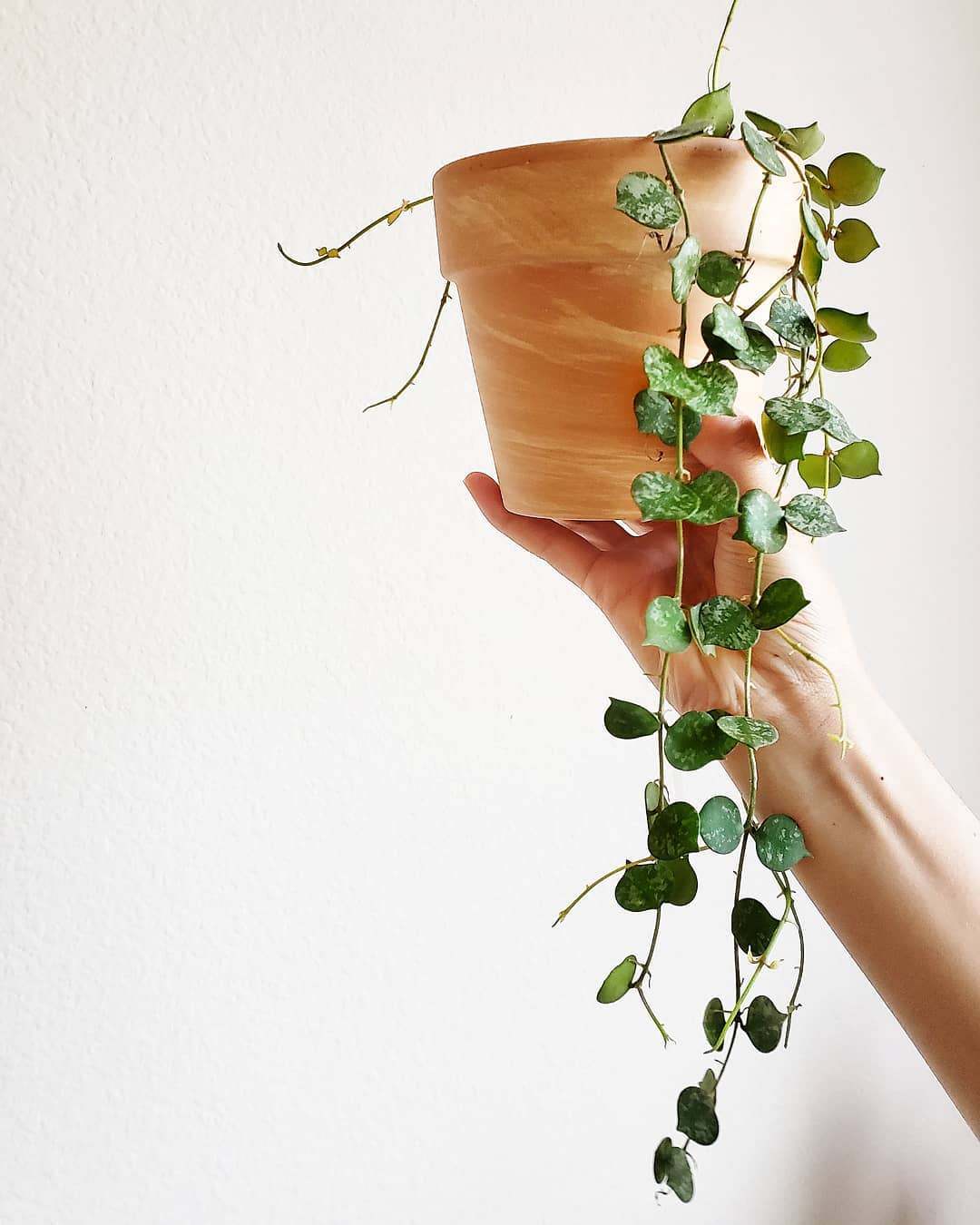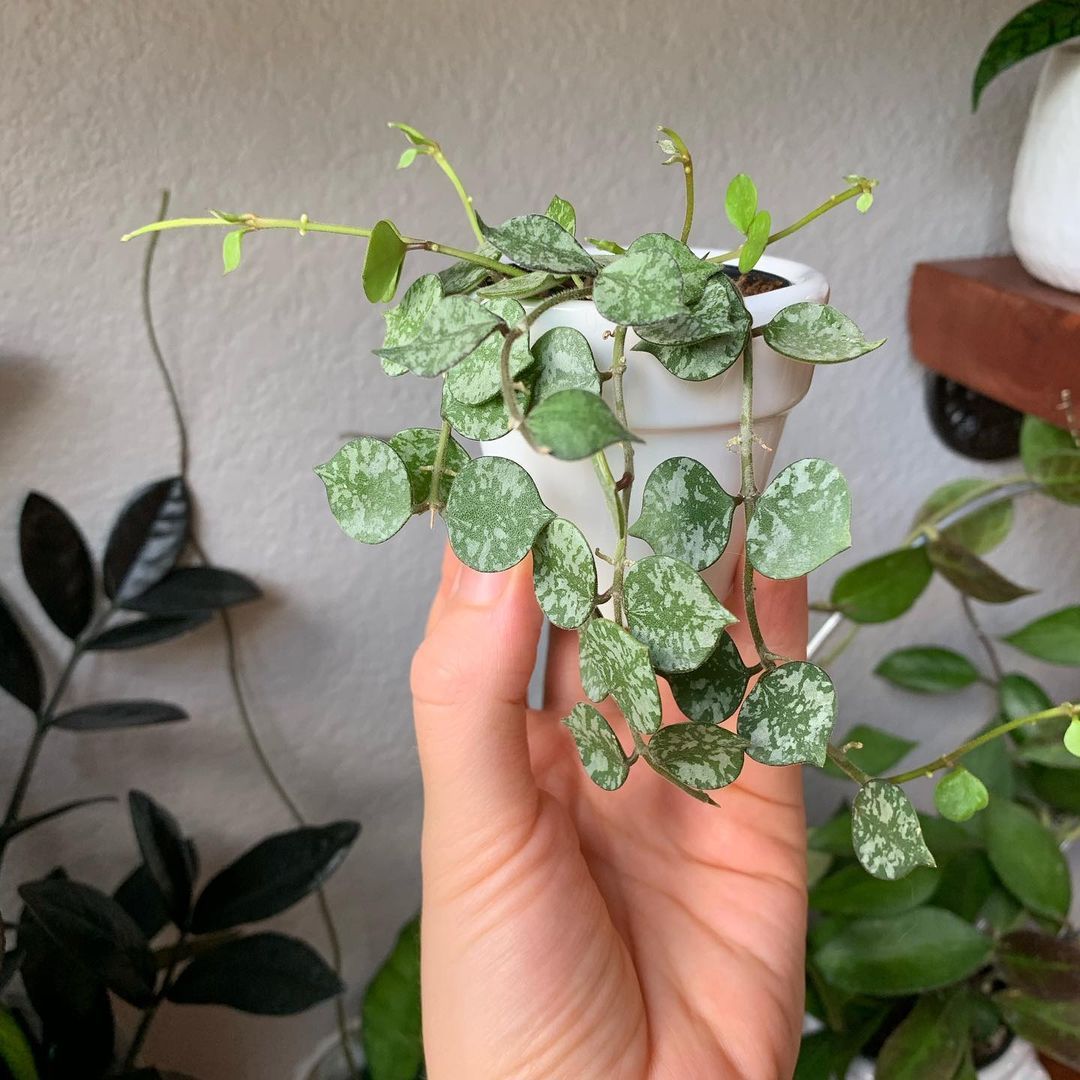Hoya Curtisii Care: How to Grow & Care for the Porcelain Flower
Hoyas pose as delightful houseplants to adopt and care for. And that’s especially true for the Hoya Curtisii variety which goes by other names such as the ‘Fung Wax plant’, Porcelain flower, and Hoya Aloha. If you’re strapped on space or just want to own a miniature houseplant, then you want to give this tropical epiphyte a shot. In this guide, we’ll check out the basics of growing and taking care of the Porcelain flower.

More About the Porcelain Flower
Also known as the Wax plant, this tropical houseplant is ideal for both an indoor setting as well as ground cover. Tracing it back to its roots, the slow-growing perennial is native to tropical regions of Malaysia, Philippines, and Thailand—according to a 2012 study from the University of British Columbia.
It’s a member of the Apocynaceae family with a dense tendency to grow at a sluggish pace. This miniature houseplant will average a height of between 2’ to 3’ inches. It also spans about 1’ foot wide. Most growers adopt it for the glowing heart-shaped leaves.
They’re succulent in nature, so they can survive a little bit of neglect, and the leaves are thicker than most varieties in the genus—making this type ideal for ground cover. If you grow your Hoyas in a small to a medium-sized hanging basket, they can trail downwards up to 6’ inches long with each basket carrying anywhere between 4-5 trails.
Flowering & Fragrance
During spring, your Hoya Curtisii plant will bloom a few flowers that usually grow in clusters. Under typical growing conditions, they’ll appear red with a yellow tone in the middle. While it’s practically hard to make this tropical epiphyte bloom, the much you can do to at least achieve the bare minimum results is give it some filtered light maintain medium to moderately high humidity levels.
Light & Temperature
For an ecstatic blooming phase, the Porcelain flower is better off when placed somewhere close to a window. This slow-growing perennial will amuse you with its red flowers with a yellow lining in the middle.
They grow in clusters and usually have no scent. Once the blooming season is over, the blooms will wither off, so you’ll need to get rid of them to maintain the plant’s physique. It’s also worth noting that this winter-hardy plant prefers to grow under USDA hardiness 10 or above.
I prefer to place my Hoyas close to any window facing east so they can get enough sunshine during the morning hours. And even they’re known to be winter-hardy, high chances are your Hoyas won’t tolerate temperatures falling below 4 degrees Celsius. You, therefore want to adjust the room temperature once it falls to 10 degrees Celsius.

Watering & Feeding
Hoyas prefer to be watered with some bit of moderation since they are almost entirely drought-tolerant. You want to wait till the topsoil dries up completely before watering your Porcelain flower again. It roughly needs to be watered twice every week during summer.
Cut back the intervals to once every two weeks during winter since the growth hormones will be dormant around this season. Allow the soil to soak in water till any excess moisture gets out through the drainage holes of the growing medium. Before watering your Hoya Curtisii houseplant again, make sure the soil isn’t drenched, especially those first few inches right beneath the topsoil.
When growing indoors, you want to keep the humidity levels slightly above 50 percent since the Porcelain flower is a tropical plant accustomed to humid conditions. Hoyas aren’t too desperate when it comes to feeding—they can do fairly well without fertilizer.
You can go the natural route and mix the potting soil with worm compost, then top-dress it with organic manure. Repeat this exercise every spring season when the growth hormones are active. When growing tropical epiphytes, I prefer this option over using synthetic fertilizers since they kill beneficial microorganisms and cause the soil to hold high toxicity levels.
But if you want to try the latter method out, make sure not to feed it with excess fertilizer especially when your Porcelain flowers look wilted or have been sitting in soggy soil for too long. Overfeeding this houseplant will burn the roots. Salts will build up and clog the root hard, causing your plant to be deficient in the essential nutrients.
Soil & Transplanting
You can use normal potting soil to grow this tropical houseplant. Another tried and tested way to go about it using the African Violet potting mix to plant your Porcelain flower. Its pH level needs to be neutral and don’t miss to consider the drainage needs. Water getting stuck in the soil for long hours will cause the roots to begin rotting.
Using orchid bark mixed with charcoal and sponge rock boosts the rate of water retention and helps balance the humidity levels around your Porcelain flower. You can also opt to work with 2 parts of a good quality cactus mix, then amend it with 1 part of pumice, or ¼ part of perlite.
Hoyas will grow perfectly well in a medium-sized container for a couple of years, so there won’t be any great need for transplanting. It’s far better if they stick to one container for the largest part of their existence since the roots are gravely prone to physical damage when repotting.
Grooming & Maintenance
You don’t need to come up with an intense grooming and maintenance routine to make your Porcelain flower look elegant all year long. Pruning is only necessary when you need to maintain its shape. Get rid of leaves that seem to physically suffer from a fungal infection. To retain the moisture levels around this houseplant, mulch the topsoil with shredded bark at least once during the warmer months.
How to Propagate the Porcelain Flower
It’s far easier to propagate this tropical epiphyte using stem cuttings. And the best time to carry this exercise out is during the spring or summer season. Wait till morning time when the parent plant is more turgid since it heightens the chances of forming root hairs.
You can also choose to propagate the Porcelain flower using seeds but they would take a little longer to develop into mature houseplants, compared to softwood stem cuttings. Here are other handy pointers to take note of when propagating your Porcelain flower:
- Prepare the potting soil using tips we shared right under the soil and transplanting section.
- To accelerate the drainage process, you can amend the potting soil with sand, perlite, or vermiculite.
- The stem cuttings need to hold at least two or three healthy leaves. Each stem cuttings should be free from signs of fungal infections and needs to be anywhere around 4 to 5 inches long.
- Although not necessary, you can dip the base part of each stem cutting into powdered or liquid rooting hormone to boost the formation of roots.
- Keep the soil moist but be careful not to leave it too soggy.
- After planting the cuttings, place the growing medium somewhere with filtered light. Direct sun rays will scorch the baby cuttings.
Another formidable method you can use to propagate your Hoyas is placing each stem cutting in a glass of water. Make sure the leaves are slightly above the water surface. You also want to replace the water once it begins to look dark and gloomy. Plant the cuttings in a wall-draining potting mix after forming roots.
Problems with the Porcelain Flower
If you’re growing your Hoyas outside, you want to watch out for root aphids. The Porcelain flower is a perfect fit for ground cover, hence it highly prone to this nutrients-draining pest. Effects of overwatering could also attract pests that fancy living in damp locations such as spider mites, fungus gnats, and mealybugs.
To keep your plant from such dreadful pests, avoid watering the leaves especially during afternoon hours, and keep the growing medium somewhere with tenable air circulation. Alongside that, you can make the best use of systemic insecticide, preferably one that’s made of imidacloprid which acts fast to ruin the transmission of stimuli right in the nervous system of pests.
Spray such kind of insecticidal soap on your Hoyas once during the early weeks of the growing season and once during mid-summer.

